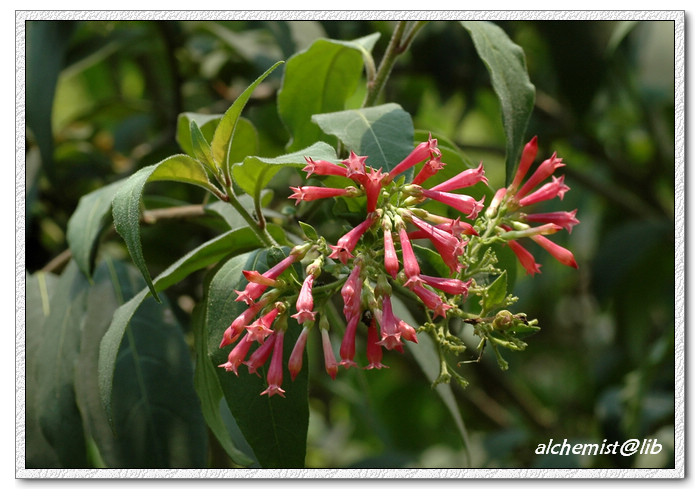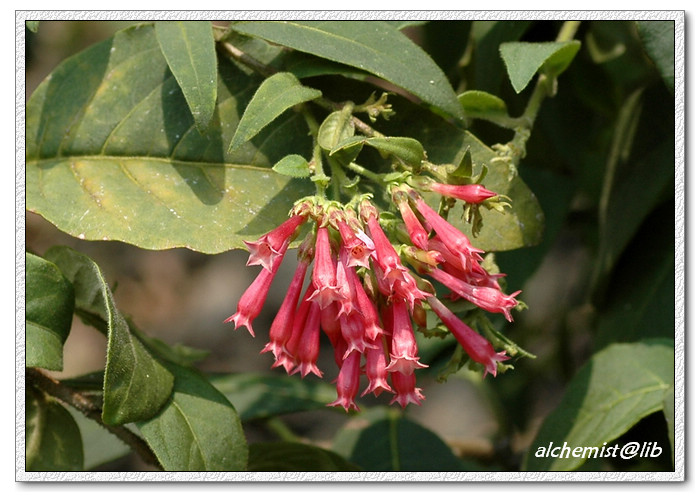瓶儿花 Cestrum elegans
- Scientific Name: Cestrum elegans (Brongn. ex Neumann) Schltdl.
- Ref: Linnaea 19:261. 1847
- Synonyms: Cestrum paniculatum Schltdl.; C. purpureum (Lindl.) Standl.; C. smithii (Anon.) Biswas; C. sylvaticum Dunal; Habrothamnus elegans Brongn. ex Neumann; H. huegelii Regel; H. purpureus Lindl.; Meyenia purpurea (Lindl.) Heynh.
- English Common Name: purple cestrum, red cestrum, bastard jasmine
- Chinese Common Name: 瓶儿花 píngrhuā, 紫瓶子花 zǐ∙píngzi∙huā, 毛茎夜香树 máojīng yèxiāng∙shù
- Japanese Common Name: ベニチョウジ [紅丁字] benichōji, ベニバナヤコウカ [紅花夜香花] benibanayakōka
- Family: Solanaceae
- Genus: Cestrum
- Distribution: Yunnan [native to Mexico]. Cultivated for ornament.
- Photo: 06/21/2009, South China Botanical Garden, Guangdong
Shrubs. Stem copiously pubescent. Petiole 6-12 mm; leaf blade ovate or elliptic, ca. 8 × 3 cm. Inflorescences erect, terminal or axillary, congested racemose panicles; bracts ovate, minutely tomentose, 4-5 mm. Flowers odorless. Pedicel ca. 1 mm. Calyx narrowly campanulate, 6-8 mm, glabrous, unribbed; teeth ca. 3 mm, ciliate. Corolla red, pink, or violet, ca. 2 cm, expanded upward, abruptly contracted at throat, glabrous; lobes deltoid, ca. 2 mm. Filaments glabrous, unappendaged, slightly bent at point of insertion. Fruiting calyx not splitting. Berry dark pink, globose, 0.8-1.3 cm. Seeds ca. 8. (Flora of China)

06/21/2009, South China Botanical Garden
